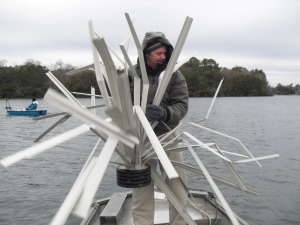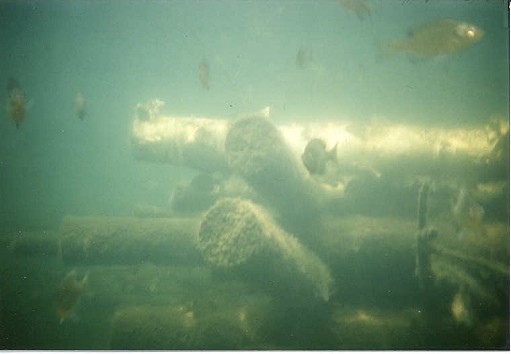Christopher Meyers, Director of Planning for City of Gary, (left) and Joel Baldwin, project manager with Hitchcock Design Group, talk about the dredging work at the Marquette Lagoon that will soon begin following a press conference at Marquette Park in the Miller section of Gary, Ind. Friday October 7, 2011. | Stephanie Dowell~Sun-Times Media
At a glance
See the dozens of unique artificial fish habitat models, fish attractors and fish cover used at fishiding.com, the industry leader and only science based, man made and artificial fish habitat, proven to provide all fish with cover they prefer to prosper.
The Great Lakes Restoration Initiative action plan, developed by the EPA with 15 other federal agencies in 2010, calls for aggressive efforts to address five priorities:
Clean up toxics and areas of concern
Combat invasive species
Promote near-shore health by protecting watersheds from polluted run-off
Restore wetlands and other habitats
Track progress, education and work with strategic partners
The EPA also awarded $994,350 to the U.S. Geological Survey to expand fish and bird monitoring along the Great Lakes’ beaches to fight botulism and other contaminants damaging wildlife. About 20 percent of that money, and 20 jobs, will come to Gary next year.
Just a few yards away from the Lake Michigan’s southern shore, in a serene part of the massive park, dignitaries gathered beneath shade trees to hear of the awards and what they will mean for the area.
Meanwhile, workers with heavy machinery continued the $28 million, RDA-funded facelift of the park nearby, including the popular Marquette Park Pavilion.
The grant to the RDA will go toward dredging the lagoon and using the soil to firm up the lagoon’s shoreline, said Cameron Davis, EPA senior adviser on the Great Lakes. Erosion and other natural forces have pounded the lagoon.
“It’s an area of concern that needs most of our help,” Davis said, adding the project will improve fish and wildlife habitats around the lagoon.
To get the money the RDA and its contractor, Ohio-based Los Alamos Technical Associates, had to agree to hire up to 20 unemployed residents to do the work. The work will include dredging soil from the bottom of the lagoon to expand the fish habitat and relocating that soil to the shoreline and other areas.
The U.S. Geological Survey also had to agree to hire 20 local employees to land its share of the federal money. The work will include collecting different animal species, including carcasses, to determine if botulism was the cause of the deaths.
“This $1 million is our tax dollars being put to good use,” said U.S. Rep. Pete Visclosky, D-Merrillville. “This is an example of how our tax money can be wisely spent and put to use to put citizens to work.”
Christopher Meyers, Gary’s planning director, said the city would work closely with Los Alamos to ensure the company hires locally.
“There is the great environmental benefit, but, ultimately, it’s about creating jobs and helping the local economy,” Meyers said.Michael Gonzalez


